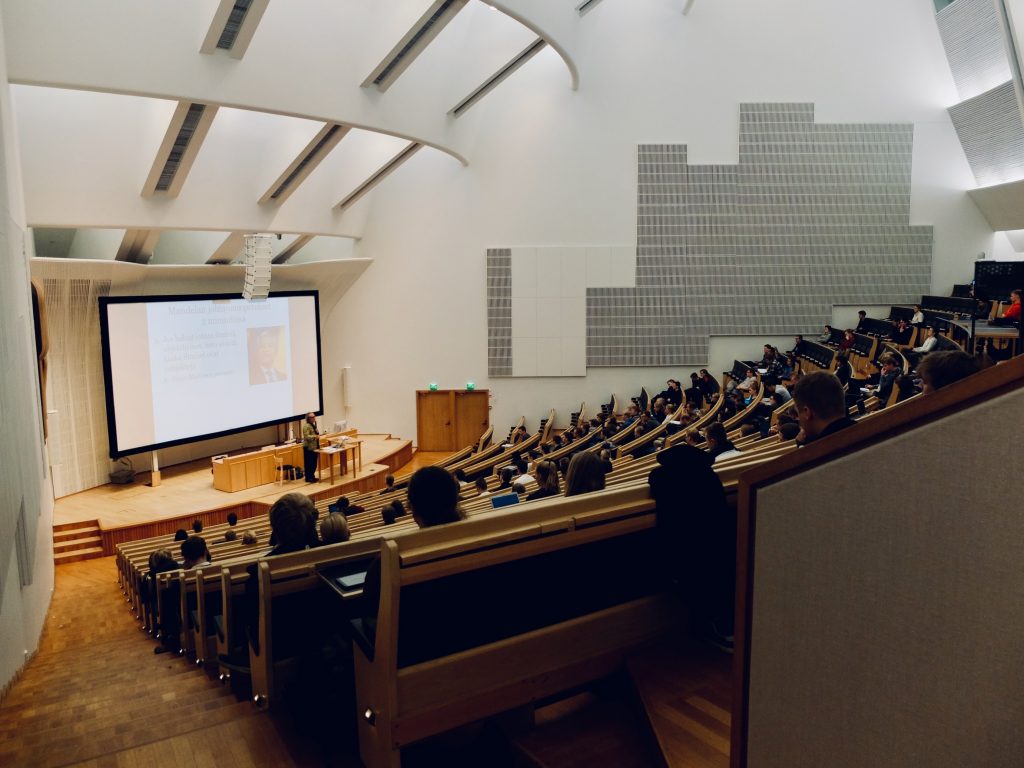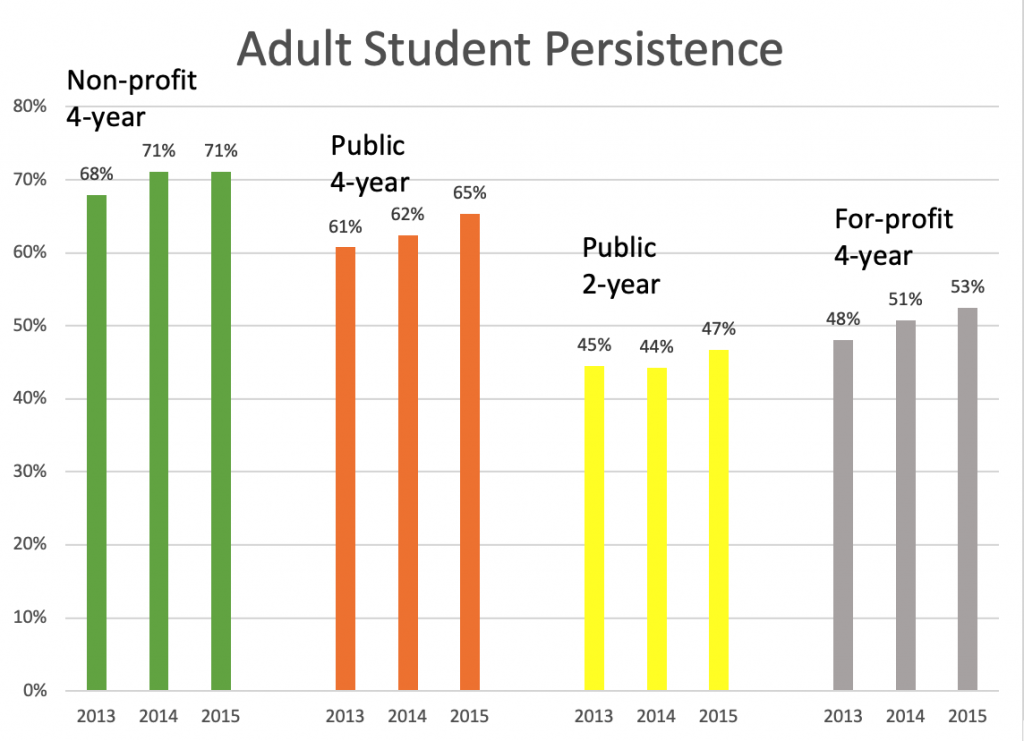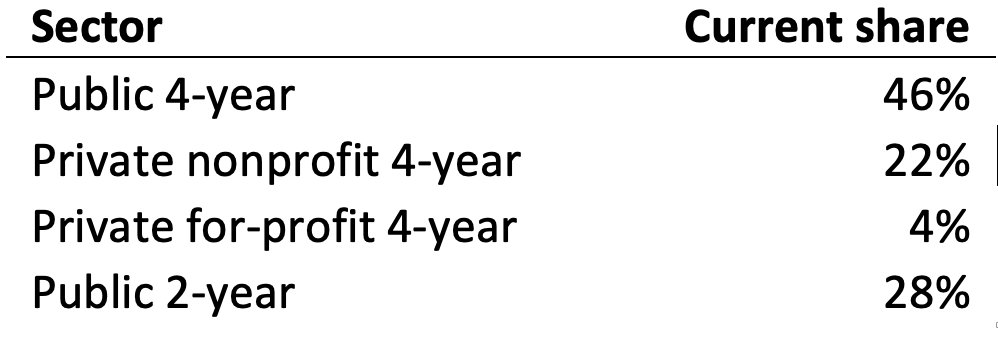Published on
Encouraging News: Persistence Among Adult Students Has Increased

In the latest report on student persistence, the National Student Clearinghouse Research Center details improvements in student persistence across the board.
Student persistence follows learners who have completed their education, are still enrolled or transfered to another school.
The Clearinghouse follows students throughout their journey and tracks completions as well as transfers, providing a valuable source for tracking trends.
The cohort for this report is a group of first-time students who entered college in fall 2015, tracking their progress across six years.
In this report, persistence improved for adult students—age 25 and up—in each sector: non-profit four-year, public four-year, public two-year and for-profit four-year.

The non-profit four-year sector maintains its record as the best place for adult students to persist to a degree, but there have been solid gains in each sector. These are encouraging steps in the right direction. We don’t know how the pandemic has disrupted this encouraging trend, as this enrollment tracking covers long-term (six-year) trends. But there is some evidence that adult students have been deeply affected by the pandemic.
In fall 2021, enrollment in the U.S. was dominated by the public four-year sector, with shrinking shares for the public two-year and the for-profits. The total enrollment in U.S. higher education was down by nearly 5% since fall 2019, and the unduplicated headcount sits at 17,054,375 for fall 2021.

What can we do to support persistence?
There are well-established steps that enhance persistence among adult students. Orientation and entry courses help establish networks and friendships that can sustain students. Accelerated programs that are occupationally focused shorten time-to-degree and enhance commitment. Greater connection is built through well-trained advisors and coaches, caring faculty and the use of cohorts. Participation in prior learning recognition (aka PLA) more than doubles an adult student’s chances of persisting. For more on these steps, read my 2019 article in the Journal of Continuing Higher Education.
Author Perspective: Administrator


